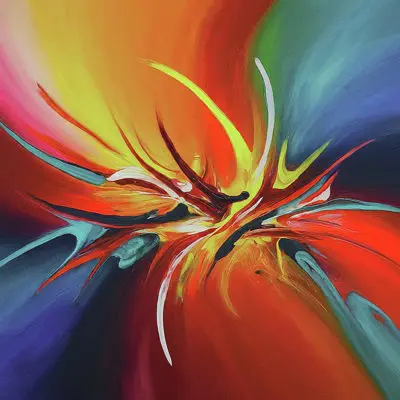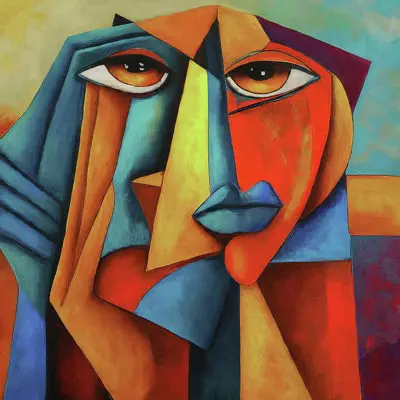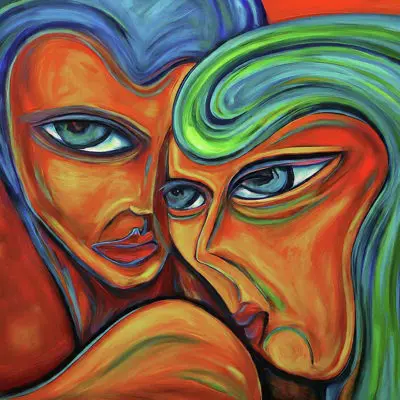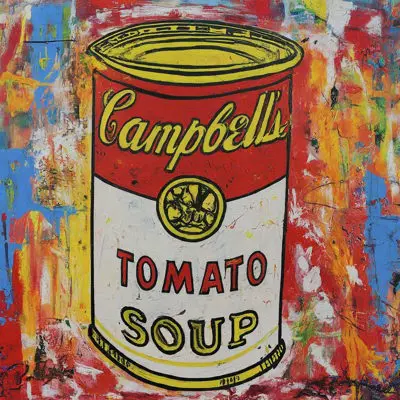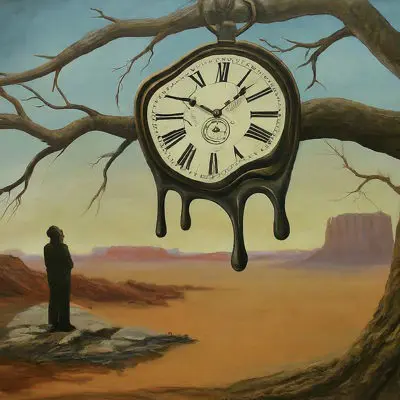Exploring Modern & Contemporary Painting: Styles, Movements, & Impact
Modern and contemporary painting styles represent the evolution of art from the late 19th century through today, characterized by experimentation, breaking away from tradition, and embracing new ideas, techniques, and perspectives. While modern art refers to the period from the late 1800s to the mid-20th century, contemporary art covers the art being created from the 1960s onward.
Key Characteristics of Modern Painting (Late 19th - Mid-20th Century)
Modern painting emerged as artists began questioning traditional techniques, subjects, and philosophies, driven by rapid industrialization, urbanization, and changing societal values.
- Abstraction and Non-Representational Forms
- Artists increasingly moved away from realistic representations, focusing on shapes, colors, and forms to convey emotions, ideas, or conceptual themes. This gave birth to abstract art.
- Example: Wassily Kandinsky's abstract compositions, where shapes and colors represent emotions rather than objects.
- Rejection of Traditional Perspective
- Artists challenged the use of linear perspective, depth, and realistic proportions, embracing flatness and multiple viewpoints in a single work.
- Example: Cubism (e.g., Picasso and Braque) fragmented objects into geometric forms, allowing multiple perspectives within one composition.
- Emphasis on Individual Expression and Emotion
- Movements like Expressionism focused on conveying the artist’s internal feelings and emotions rather than an objective reality. The use of exaggerated forms and bold colors expressed personal or societal angst.
- Example: Edvard Munch’s The Scream is a quintessential expressionist work, showing inner emotional turmoil.
- Experimentation with Color
- Many modern artists used color in new, bold ways, often for emotional or symbolic effect rather than realistic representation. For example, Fauvism (e.g., Henri Matisse) used wild, vivid colors to evoke emotion and mood.
- Social and Political Themes
- Many modern art movements, like Dadaism and Surrealism, addressed the chaos of the world, particularly after the trauma of World War I. These movements challenged societal norms and used absurd, dreamlike imagery to critique modern life.
- Example: Salvador Dalí's surreal paintings, such as The Persistence of Memory, explored the subconscious and distorted reality.
- New Techniques and Materials
- Modern painters experimented with non-traditional materials and methods. Collage, mixed media, and new painting tools were introduced to break away from traditional oil on canvas.
- Example: Dadaists and Surrealists like Max Ernst used techniques like frottage and collage to create unexpected textures and juxtapositions.
Key Modern Movements
- Impressionism (Monet, Degas) – Focused on light and movement, capturing fleeting moments.
- Cubism (Picasso, Braque) – Abstracted subjects into geometric forms.
- Expressionism (Munch, Kandinsky) – Emphasized emotional and psychological states.
- Surrealism (Dalí, Magritte) – Merged dreamlike imagery with reality, influenced by Freudian psychology.
- Abstract Expressionism (Pollock, Rothko) – Focused on spontaneous, gestural brushstrokes and large canvases, emphasizing the physical act of painting itself.
Key Characteristics of Contemporary Painting (1960s - Present)
Contemporary art reflects the diversity, complexity, and globalization of today’s world. It often focuses on current social, political, and cultural issues, using an expanded range of media and styles.
- Pluralism and Diversity of Styles
- Contemporary art does not adhere to a single style or movement. It embraces a wide variety of approaches, from hyper-realistic to abstract, conceptual, and performance-based art.
- Artists explore multiple techniques and themes, with freedom from the constraints of past movements.
- Conceptual Focus
- Contemporary painting often emphasizes ideas and concepts over aesthetics. The meaning or message behind the artwork may take precedence over its visual form.
- Example: Yoko Ono’s conceptual works or Damien Hirst’s series of paintings that focus on themes of life, death, and consumerism.
- Use of Mixed Media and Technology
- Contemporary painters frequently incorporate different materials (such as photography, digital media, or found objects) into their work, blurring the lines between painting and other forms of art.
- Example: Anselm Kiefer, whose large, textured works combine paint with found objects like straw and lead to comment on history and memory.
- Global and Cultural Commentary
- Artists today often address global themes, including politics, race, identity, and the environment. Their work reflects a connected, digital world with diverse perspectives.
- Example: Kehinde Wiley’s portraits blend classical European techniques with contemporary Black culture, exploring power, race, and representation.
- Environmental and Social Issues
- Environmental themes and social activism play an important role in contemporary art, with many painters addressing climate change, inequality, and social justice.
- Example: Banksy, whose politically charged street art comments on issues like war, consumerism, and government control.
- Minimalism and Simplification
- Some contemporary painters adopt minimalist styles, using simple forms and color to focus attention on the essence of the subject matter.
- Example: Agnes Martin, whose subtle grid-based paintings are meditative, focusing on simplicity and purity.
- Performance and Process-Oriented Art
- Contemporary art often involves the process of creation as part of the artwork itself. Performance-based art and action painting are examples where the making of the work is just as important as the finished product.
- Example: Yves Klein’s "Anthropometry" paintings, where models covered in blue paint became living brushes, creating the artwork through physical performance.
Key Contemporary Movements
- Pop Art (Warhol, Lichtenstein) – Uses imagery from popular culture and mass media.
- Minimalism (Donald Judd, Agnes Martin) – Focuses on simplicity and purity of form.
- Street Art (Banksy, Shepard Fairey) – Engages with public spaces and often contains social and political messages.
- Neo-Expressionism (Basquiat) – Revives bold, emotive styles, often with a raw, energetic approach to form and content.
- Conceptual Art (Joseph Kosuth, Yoko Ono) – Prioritizes ideas over traditional aesthetics.
Modern painting represents a break from traditional forms and a move toward abstraction, emotion, and individual expression. Movements like Cubism, Surrealism, and Abstract Expressionism revolutionized the art world.
Contemporary painting encompasses a wide range of styles and themes, often focusing on global, social, and cultural issues. It embraces conceptual ideas, mixed media, and technology, reflecting the diversity and complexity of today’s world.

